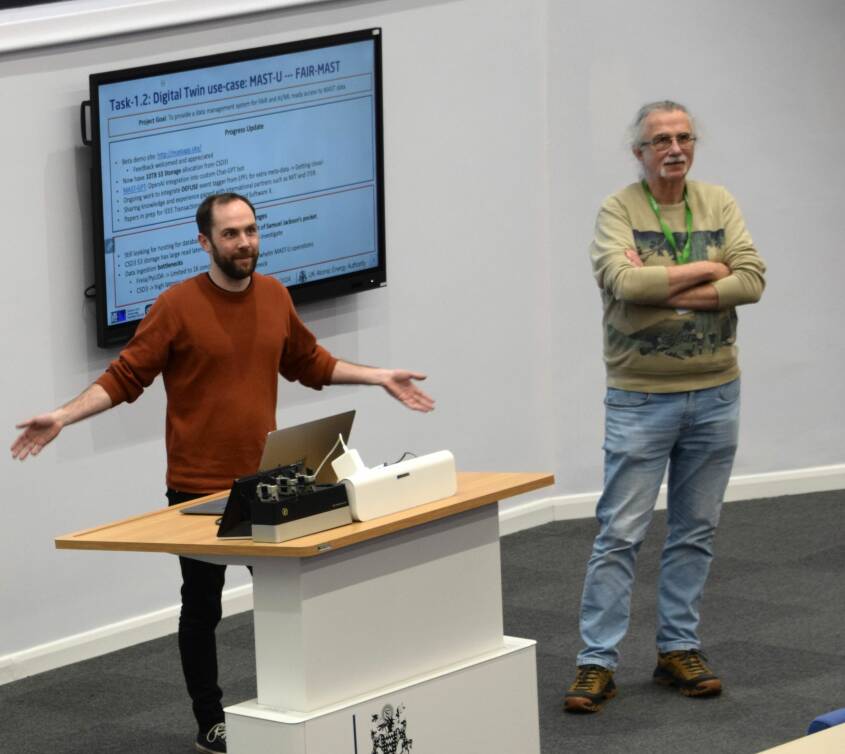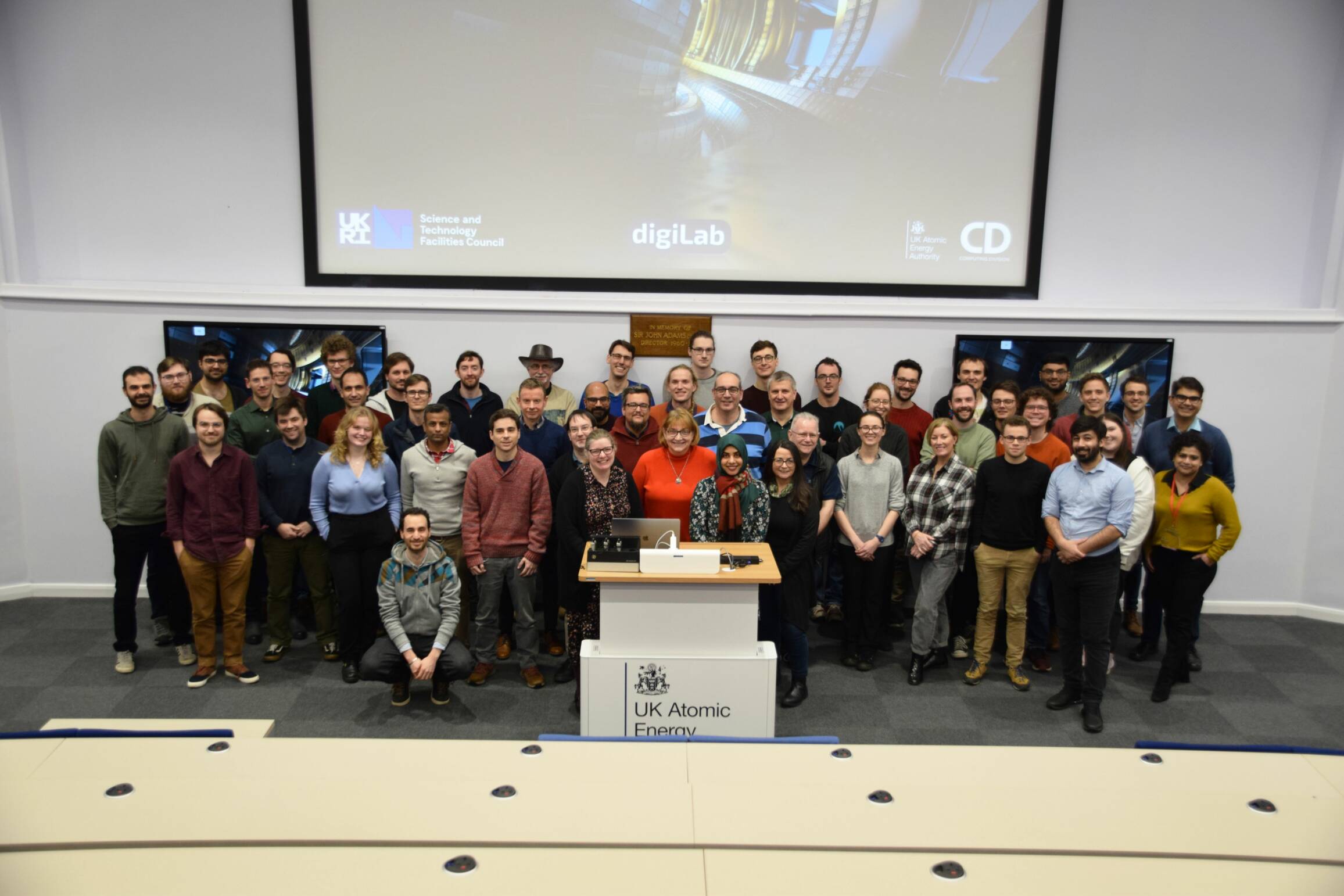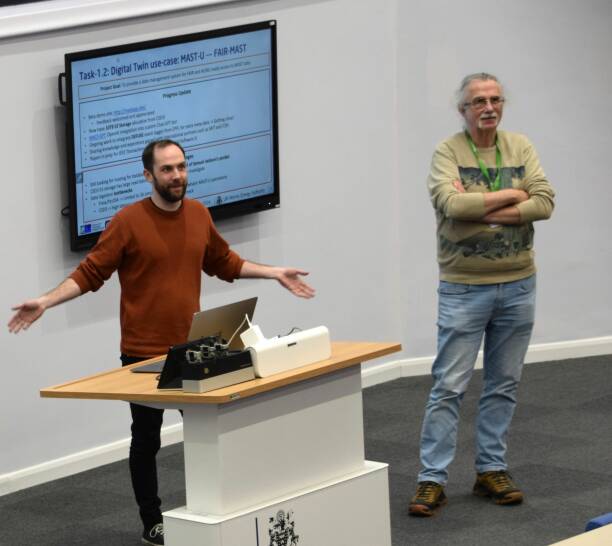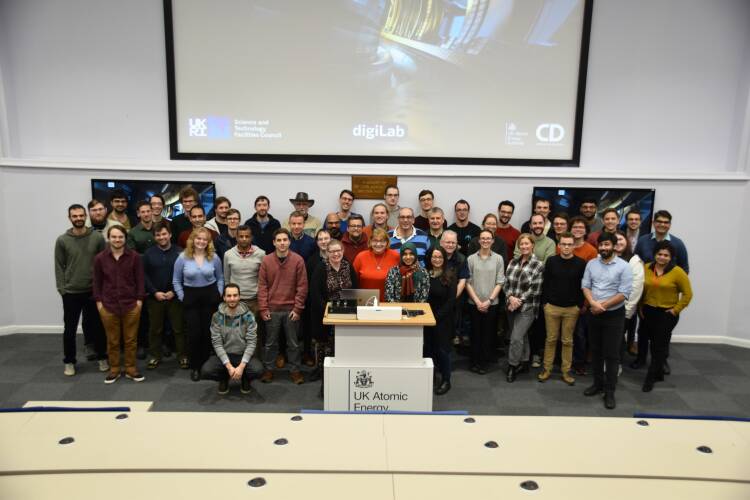
Suppercomputing is essential for fusion research to overcome complex challenges. The Fusion Computing Lab combines UKAEA's fusion expertise with Hartree Centre’s leading capabilities in supercomputing and AI.
At the heart of this project is the ambitious goal to develop the first digital twin of a fusion power plant. This "in silico" model allows for parallel testing, meaning scientists can simulate real-world conditions and test various technical factors without needing to experiment on physical plants. The result? Faster, safer, and more efficient optimisation of fusion technology, bringing us closer to making fusion a scalable energy solution.
Rob Akers, Director of Computing Programmes at UKAEA, said:
“There’s a real opportunity around what we call the convergence of AI and high-performance computing — the two are coming together”
A digital twin will be able to quickly and accurately adjust for changes in plasma behaviour and account for multiple variables in testing criteria. This will be particularly important for modelling how the plant will respond to age-related changes, as materials and components are expected to respond differently to strains as they get older.
Vassil Alexandrov, Chief Science Officer at the Hartree Centre, said:
“AI could replace some of the numerical simulations of plasma behaviours. We have to simulate in intervals of 0.01 milliseconds or 0.001 milliseconds, and if you use standard computing methods, it’s too slow. So, we need to have an AI equivalent that allows for computing in this timescale to realistically model the behaviour of the plasma and be able to control it in real time.”
The Lab is now in its third year and continues to grow, bringing in partners like the STFC’s Scientific Computing Department and Exeter-based Digilab. The ultimate goal is to refine these tools not only for fusion energy but also for applications in industries like aerospace, military, and construction.
Digital twinning is already common practice in certain industries: in the automobile industry, for example, digital twins are expected to replace traditional crash test dummies for car safety tests within the next decade. By using predictive models to determine and define automobile behaviours, digital twins are also driving innovations in the autonomous car industry and are expected to help put safe self-driving cars on the road faster.
By leveraging AI and supercomputing, the UKAEA aims to make fusion energy a viable, safe, and scalable reality. This programme exemplifies the UK’s leadership in the global pursuit of clean energy solutions, with the potential to transform both fusion technology and high-tech industries worldwide.
To read the full detailed case study and find out more information click below
The Fusion Computing Lab, established in 2021, is a collaborative initiative between the UK Atomic Energy Authority (UKAEA) and the Science and Technology Facilities Council (STFC) Hartree Centre.


The Fusion Computing Lab, established in 2021, is a collaborative initiative between the UK Atomic Energy Authority (UKAEA) and the Science and Technology Facilities Council (STFC) Hartree Centre.
To read the full detailed case study and find out more information click below
Rob Akers, Director of Computing Programmes at UKAEA, said:
“There’s a real opportunity around what we call the convergence of AI and high-performance computing — the two are coming together”
A digital twin will be able to quickly and accurately adjust for changes in plasma behaviour and account for multiple variables in testing criteria. This will be particularly important for modelling how the plant will respond to age-related changes, as materials and components are expected to respond differently to strains as they get older.
Vassil Alexandrov, Chief Science Officer at the Hartree Centre, said:
“AI could replace some of the numerical simulations of plasma behaviours. We have to simulate in intervals of 0.01 milliseconds or 0.001 milliseconds, and if you use standard computing methods, it’s too slow. So, we need to have an AI equivalent that allows for computing in this timescale to realistically model the behaviour of the plasma and be able to control it in real time.”
The Lab is now in its third year and continues to grow, bringing in partners like the STFC’s Scientific Computing Department and Exeter-based Digilab. The ultimate goal is to refine these tools not only for fusion energy but also for applications in industries like aerospace, military, and construction.
Digital twinning is already common practice in certain industries: in the automobile industry, for example, digital twins are expected to replace traditional crash test dummies for car safety tests within the next decade. By using predictive models to determine and define automobile behaviours, digital twins are also driving innovations in the autonomous car industry and are expected to help put safe self-driving cars on the road faster.
By leveraging AI and supercomputing, the UKAEA aims to make fusion energy a viable, safe, and scalable reality. This programme exemplifies the UK’s leadership in the global pursuit of clean energy solutions, with the potential to transform both fusion technology and high-tech industries worldwide.
Suppercomputing is essential for fusion research to overcome complex challenges. The Fusion Computing Lab combines UKAEA's fusion expertise with Hartree Centre’s leading capabilities in supercomputing and AI.
At the heart of this project is the ambitious goal to develop the first digital twin of a fusion power plant. This "in silico" model allows for parallel testing, meaning scientists can simulate real-world conditions and test various technical factors without needing to experiment on physical plants. The result? Faster, safer, and more efficient optimisation of fusion technology, bringing us closer to making fusion a scalable energy solution.
